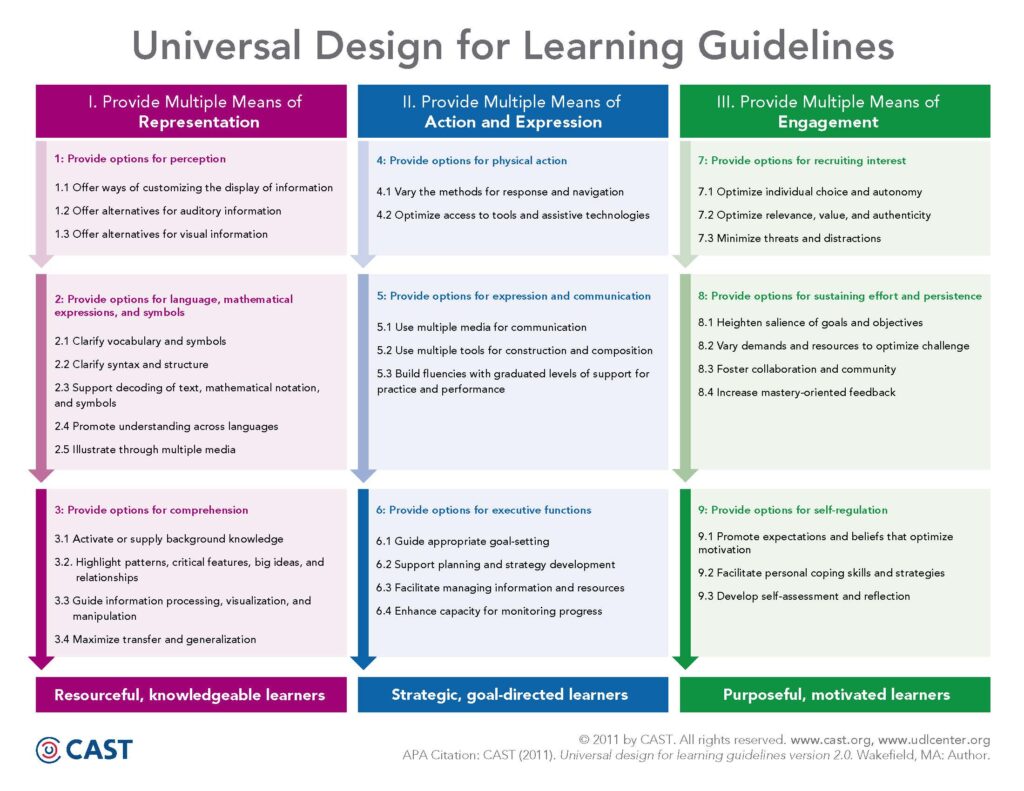Blog Prompt: How can you adjust your planned learning activities to meet the needs of your learners if an unexpected event occurs? (for example, if a pandemic arises and many of your employees must now work from home – how will you ensure that they can still do their jobs? What training will they need, and how will you deliver it, knowing they must remain at home?) This is a common discussion thread right now as many schools and universities have made the switch to teaching online.
My entire educational career prior to the pandemic was conducted through face-to-face learning and switching to online learning was a big transition. A question I considered throughout the online terms was: If a neuro-typical person (myself) is struggling with this learning environment, how is a neurodivergent person getting by? I think the answer to this question is the Universal Design for Learning (UDL), which improves the teaching and learning for any discipline or domain (CAST, 2018). The UDL guidelines are focused on human-centered learning and aim to eliminate systemic barriers to equitable learning (CAST Announces a Community-Driven Process to Update UDL Guidelines, 2020). The guidelines surround providing multiple means of; engagement, representation, action & expression, recruiting interest, perception, physical action, sustaining effort & persistence, language & symbols, expression & communication, self-regulation, comprehension, and executive functions (CAST, 2018).

In order for my group’s interactive learning resource to follow the UDL model, we need to offer multiple means for students to express and communicate their thoughts, whether that be typing a reflection or sharing their thoughts verbally with the class. Moreover, if the class had to transition to online learning, I would suggest implementing zoom lectures as they can allow students to engage with the content and communicate with their peers and the teacher on meanings, strategies, and learning goals. Firstly, these zoom lessons should be recorded to allow for students to re-visit the content to process information. Secondly, the zoom lessons should have the transcript feature enabled to allow students who are deaf or hard of hearing to fully participate. Most importantly, the instructor should be readily accessible to students who have questions or concerns. Consequently, the UDL guidelines will help eliminate barriers for any student, and this shift in learning design can highlight even more barriers to learning that require attention.
Leave a Reply